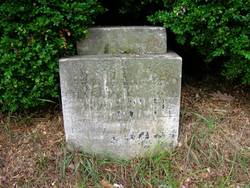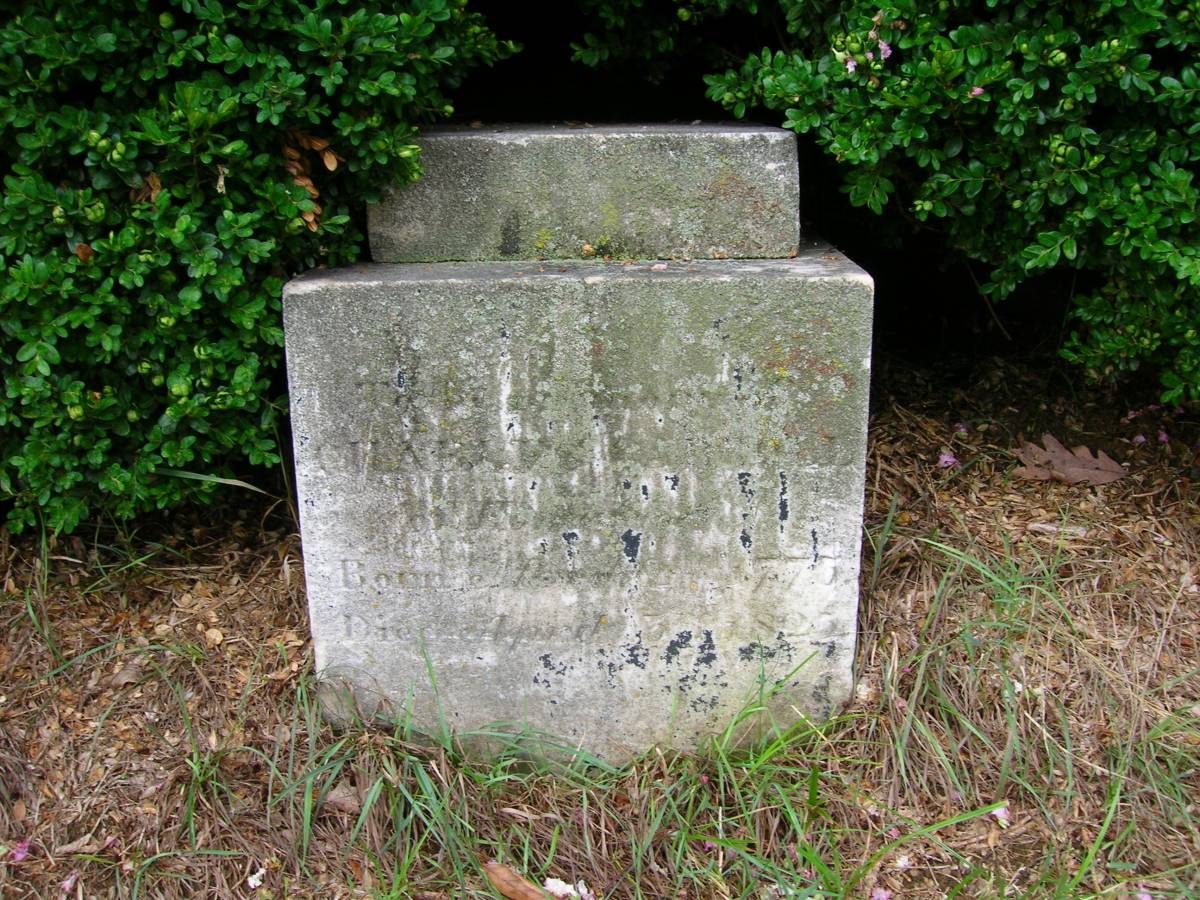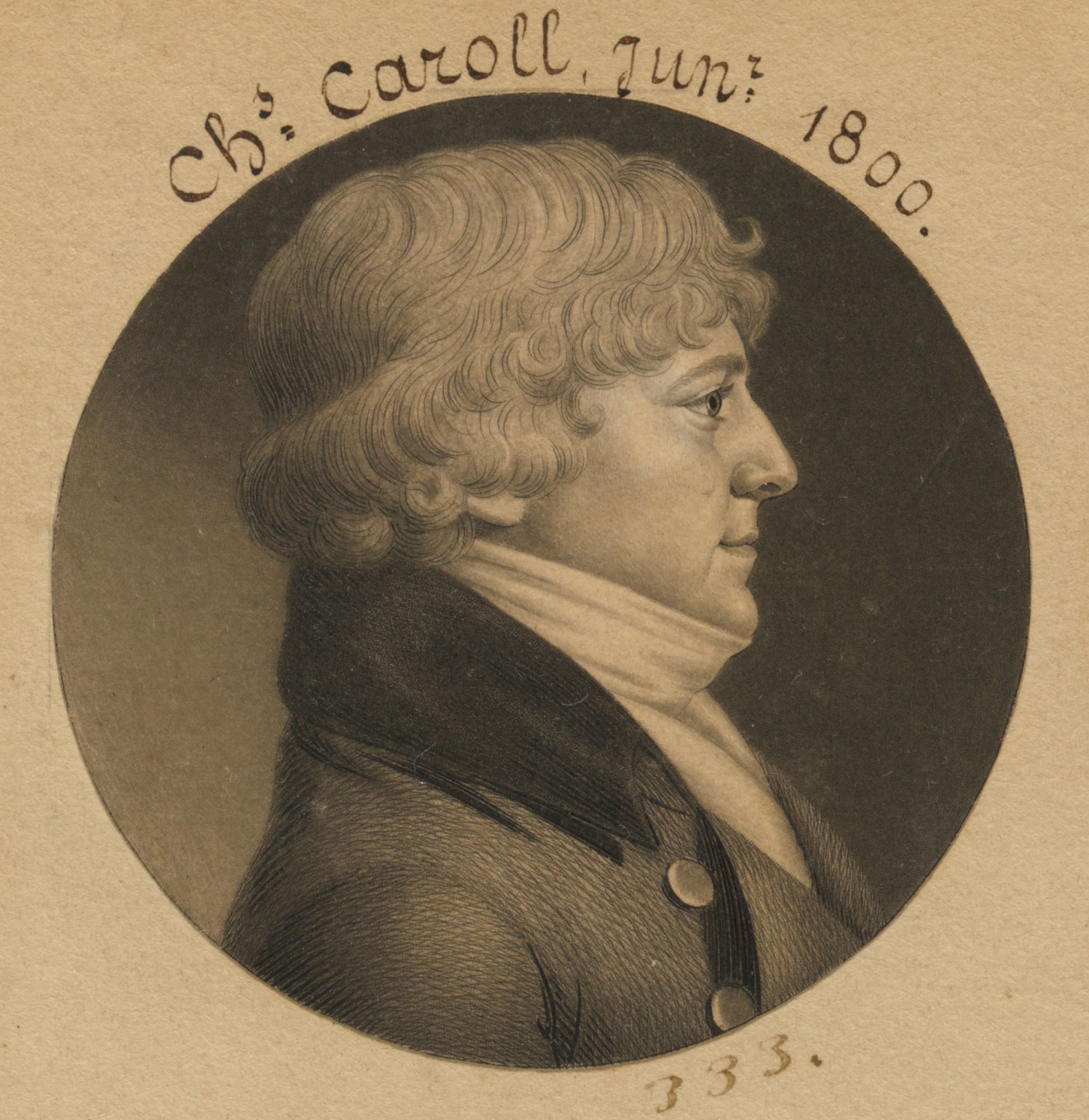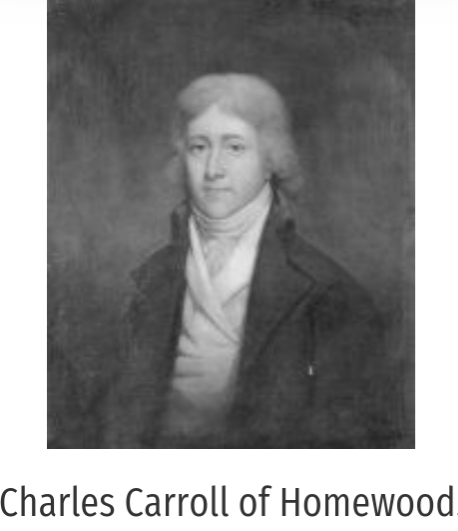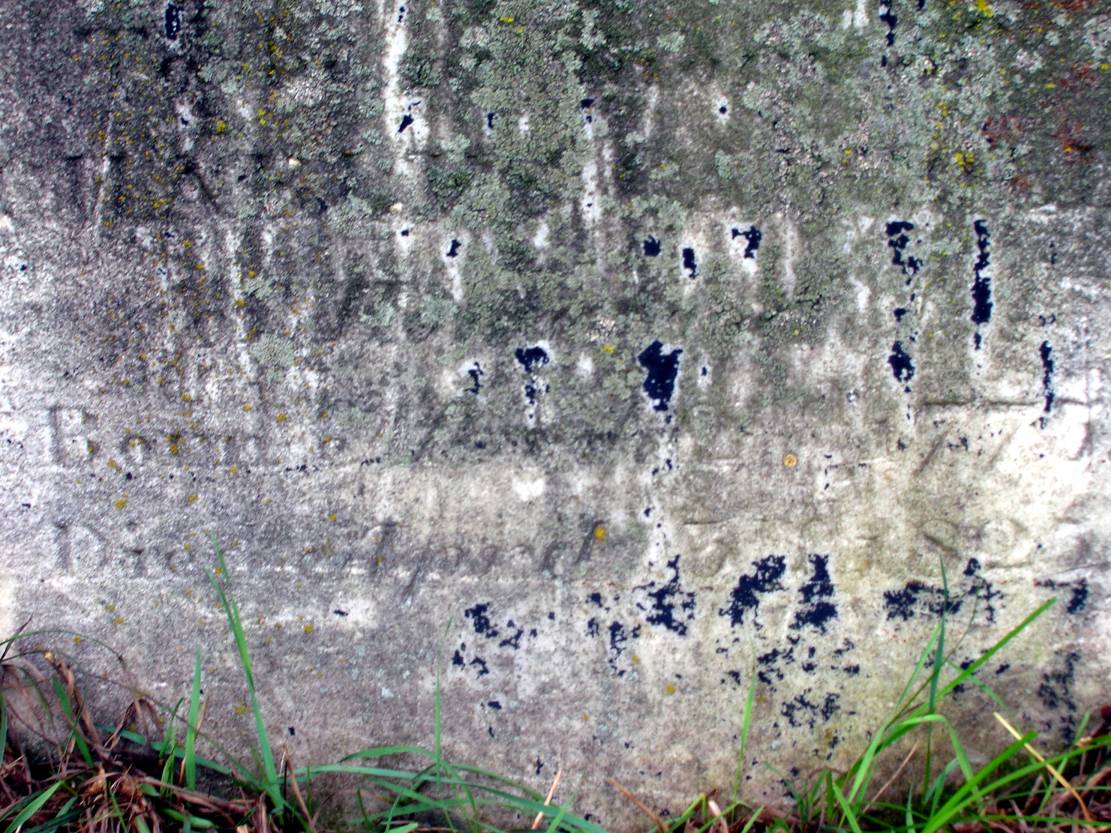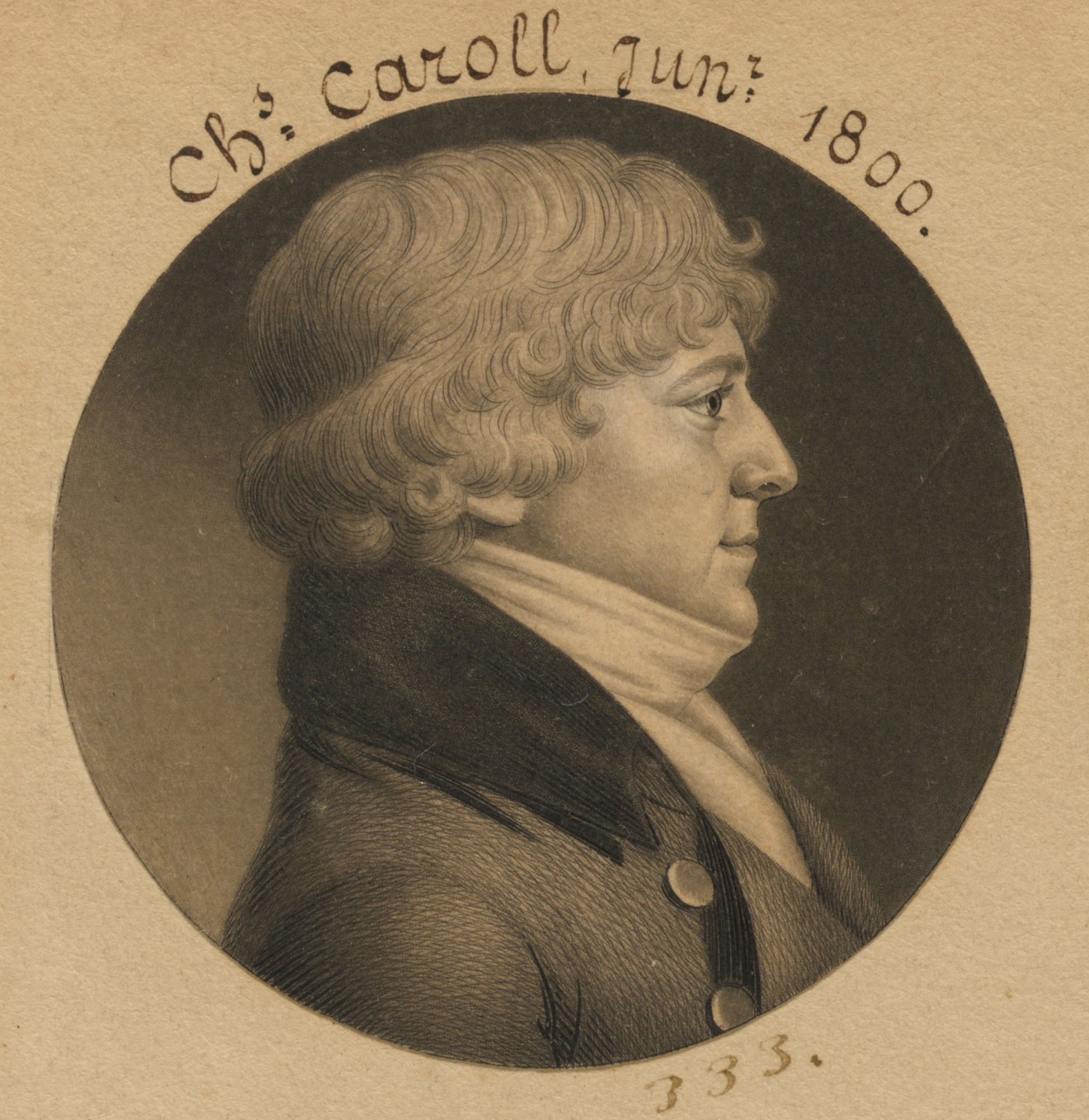Charles Carroll of Homewood is recognized for building Homewood House between 1801-1803, an elegant mansion on 130 acres in urban Baltimore for the sum of $40,000. This building is presently owned by Johns Hopkins University and was dedicated as a National Historic Landmark in 1976.
Charles Carroll of Homewood married Harriet Chew (1775-1861) on July 17, 1800. He was an alcoholic who reportedly consumed two quarts of brandy a day. This led to erratic behavior that resulted in his separation from his wife in 1816. Charles lived in Homewood until his death on April 3, 1825.
Charles Carroll of Homewood's remains were reportedly beneath the access ramp to Md 665, next to the site for a future shopping center southwest of Annapolis. In 1961 the burial site was included an area slated to be developed for the shopping center. The land was being cleared and again the cemetery was “rediscovered.” The Carroll of Homewood headstone was relocated to the Carroll Gardens behind Saint Mary’s Church and an expedition led by the Hopping Funeral Home of Annapolis set out to disinter Carroll’s remains and rebury them in the Carroll Gardens. James Durner, a parishioner and Saint Mary’s Cemetery caretaker, was involved in the excavation and in a 1983 interview told that all that was found was a casket handle. Local press coverage said the Carroll’s remains had “long since disappeared.” James Durner, April 16, 1983, said digging was done first at the foot of the headstone location and then, when nothing was found, they dug 360̊ around the headstone location, all to no avail except the casket handle. The casket handle was buried in the full-size grave that had been prepared for Carroll of Homewood.
Newspaper accounts mentioned other tombstones that were discovered, such as those of the Curran family, which were removed to the Woodfield Cemetery at the intersection of Muddy Creek and Galesville roads in Galesville.
Also see “Grave of Charles Carroll of Homewood Found Deep in Woods Near City,” Evening Capital, May 31, 1961, 1, 3; “Situation Under Study: Suitable Resting Place Sought for Remains of Charles Carroll,” Evening Capital, June 7, 1961, 1, 5; “On Katcef Property: New Light on Graves by Former Official of DAR,: Evening Capital, June 12, 1961, 1, 3; and “Casket Remains from Early Carroll Grave Reburied: Services Set Sept. 23 At St. Mary’s,” Evening Capital, September 13, 1961, 1, 5. The myth that Carroll’s remains were found and reburied was given credence in an article by William Voss Elder III, “The Carroll House in Annapolis and Doughoregan Manor,” in Van Devanter, “Anywhere So Long as There Be Freedom,” 60.]
Although many of his relatives are buried at Doughoregan Manor in Ellicott City MD, the exact location of the remains of Charles Carroll of Homewood were never found. His headstone memorial is located at the Charles Carroll House in its garden on Spa Creek in Annapolis MD.
Charles Carroll of Homewood is recognized for building Homewood House between 1801-1803, an elegant mansion on 130 acres in urban Baltimore for the sum of $40,000. This building is presently owned by Johns Hopkins University and was dedicated as a National Historic Landmark in 1976.
Charles Carroll of Homewood married Harriet Chew (1775-1861) on July 17, 1800. He was an alcoholic who reportedly consumed two quarts of brandy a day. This led to erratic behavior that resulted in his separation from his wife in 1816. Charles lived in Homewood until his death on April 3, 1825.
Charles Carroll of Homewood's remains were reportedly beneath the access ramp to Md 665, next to the site for a future shopping center southwest of Annapolis. In 1961 the burial site was included an area slated to be developed for the shopping center. The land was being cleared and again the cemetery was “rediscovered.” The Carroll of Homewood headstone was relocated to the Carroll Gardens behind Saint Mary’s Church and an expedition led by the Hopping Funeral Home of Annapolis set out to disinter Carroll’s remains and rebury them in the Carroll Gardens. James Durner, a parishioner and Saint Mary’s Cemetery caretaker, was involved in the excavation and in a 1983 interview told that all that was found was a casket handle. Local press coverage said the Carroll’s remains had “long since disappeared.” James Durner, April 16, 1983, said digging was done first at the foot of the headstone location and then, when nothing was found, they dug 360̊ around the headstone location, all to no avail except the casket handle. The casket handle was buried in the full-size grave that had been prepared for Carroll of Homewood.
Newspaper accounts mentioned other tombstones that were discovered, such as those of the Curran family, which were removed to the Woodfield Cemetery at the intersection of Muddy Creek and Galesville roads in Galesville.
Also see “Grave of Charles Carroll of Homewood Found Deep in Woods Near City,” Evening Capital, May 31, 1961, 1, 3; “Situation Under Study: Suitable Resting Place Sought for Remains of Charles Carroll,” Evening Capital, June 7, 1961, 1, 5; “On Katcef Property: New Light on Graves by Former Official of DAR,: Evening Capital, June 12, 1961, 1, 3; and “Casket Remains from Early Carroll Grave Reburied: Services Set Sept. 23 At St. Mary’s,” Evening Capital, September 13, 1961, 1, 5. The myth that Carroll’s remains were found and reburied was given credence in an article by William Voss Elder III, “The Carroll House in Annapolis and Doughoregan Manor,” in Van Devanter, “Anywhere So Long as There Be Freedom,” 60.]
Although many of his relatives are buried at Doughoregan Manor in Ellicott City MD, the exact location of the remains of Charles Carroll of Homewood were never found. His headstone memorial is located at the Charles Carroll House in its garden on Spa Creek in Annapolis MD.
Family Members
Advertisement
Advertisement
